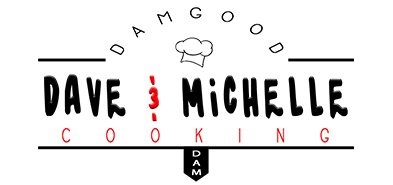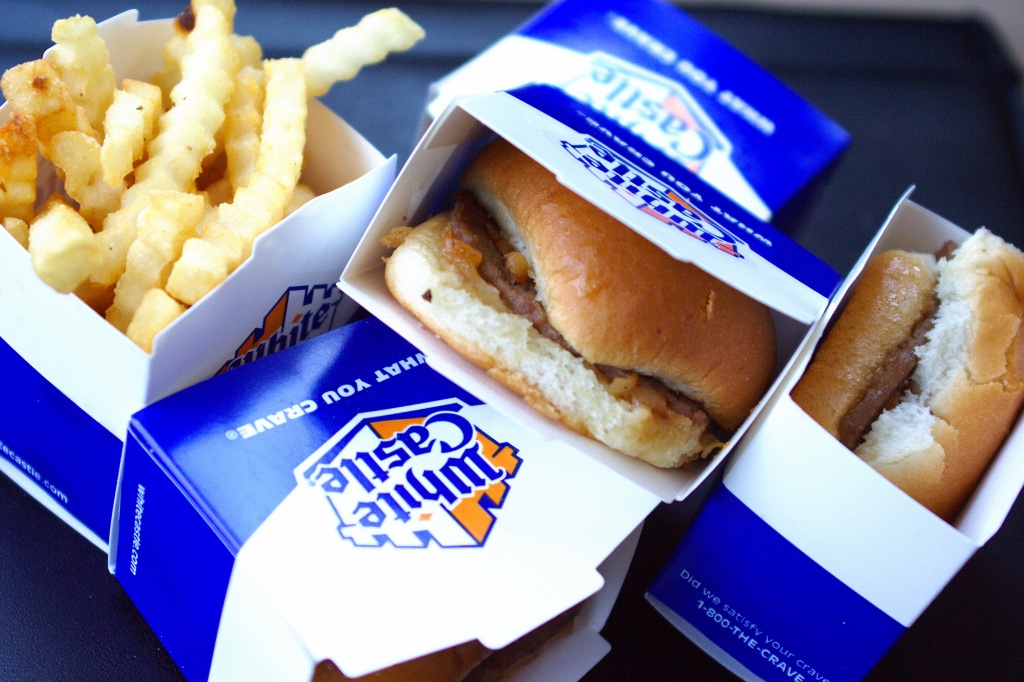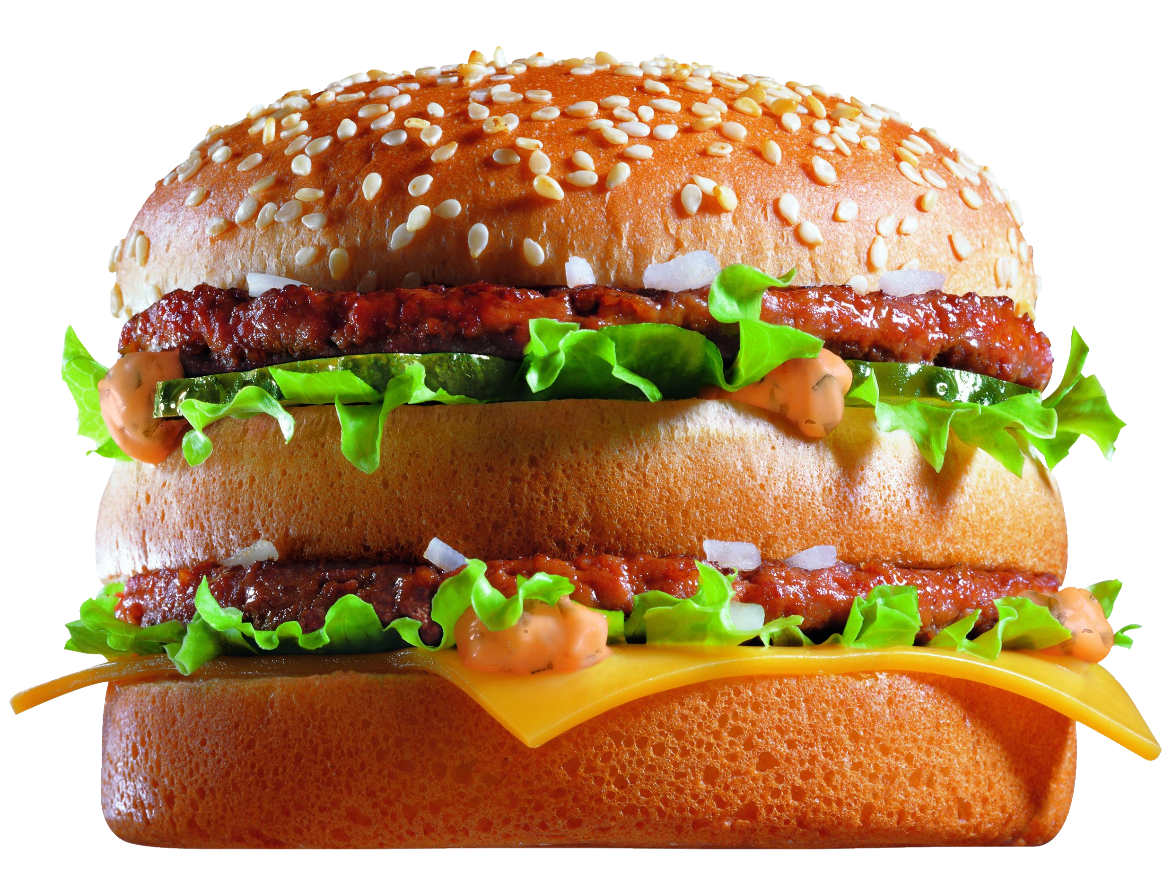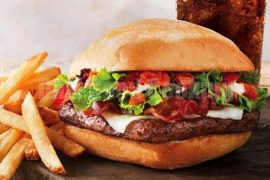Here are nine burgers that would go on to transform the burger landscape as we know it.
LOUIS’ LUNCH
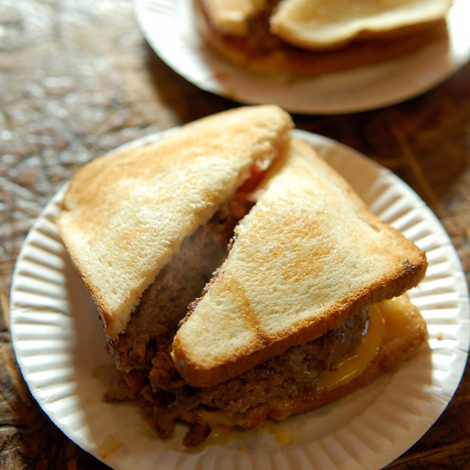 Address and phone: 263 Crown St, New Haven, CT (203-562-5507)
Address and phone: 263 Crown St, New Haven, CT (203-562-5507)
Website: louislunch.com
Why it’s influential: In 1900, Louis Lassen was selling lunch out of a horse-drawn cart in New Haven. The story is already one of legend, but bears repeating—a man in a rush asked Lassen to put his order, a Hamburg Steak, on some toast so he could get going. Chopped Hamburg Steak, the culinary gift of German immigrants, was served on a plate and only possible to consume with a fork. Lassen believed he was onto something and began selling his now-famous Hamburger Sandwich. There are other claims to the invention of the burger that seemed to have happened simultaneously around America at state fairs, but no one can deny that at 115 years old, Louis’ Lunch is the longest continually-operating hamburger stand in the world.
WHITE CASTLE
Website: whitecastle.com
Why it’s influential: The influence of White Castle on the American hamburger is astounding. Put it this way—had it not been for White Castle, you probably would never have enjoyed a burger in your lifetime. In 1920, the tiny burger stand from Wichita, KS salvaged the burger’s reputation by restoring its image with gleaming white restaurants and young, sharply-dressed, smiling, short-order cooks. But if that were not enough, it was White Castle that standardized the hamburger bun, and some say in effect technically invented the hamburger itself. Places like Power’s in Fort Wayne, IN, Motz’s in Detroit, MI, and White Rose in Linden, NJ still crank out the same fresh-beef 1.5 ounce sliders that made White Castle famous. These places hold the DNA of the original White Castle slider. If only the mothership could return to its roots.
THE RITE SPOT
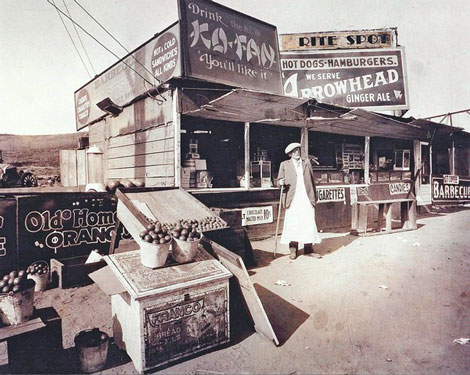
Address and phone: 1500 W. Colorado, Pasadena, CA (Defunct)
Website: N/A
Why it’s influential: By the mid-1900s—thanks to the enormous influence of White Castle—the burger was everywhere. The classic patty-and-bun combination was ubiquitous, and short-order chefs across America were starting to experiment with toppings like fried eggs and the popular Los Angeles condiment, chili sauce. It was only a matter of time before someone slipped a slice of cheese on a patty to create the first cheeseburger. That cook was teenager Lionel Sternberger (yes, his actual name) at his family’s fruit stand in Pasadena, CA. It’s assumed that the addition of cheese to his burgers prompted Lionel to open the now-defunct burger joint called the Rite Spot, and the rest was history.
MCDONALD’S
Address and phone: International
Website: mcdonalds.com
Why it’s influential: There’s no getting around this one, and they know it. The golden arches are unquestionably responsible for the continued international expansion and awareness of the great American hamburger. Unfortunately they use frozen patties, so I avoid talking about the burgers that they serve today; but in the beginning it was a very different story. The McDonald brothers decided one day that the carhops at their tiny Southern California drive-in were bad for business. By removing the inefficient humans from the equation and making people come into the building to order, they could sell far more burgers. They devised a hamburger assembly line where burgers were always ready. That model alone altered just about every aspect of the fast-food kitchen. I’ll give them that.
IN-N-OUT BURGER
Address and phone: West Coast
Website: in-n-out.com
Why it’s influential: The cult classic Southern California In-N-Out helped create a fast-food burger model that has been replicated all over the globe. Just after opening a small burger stand in Baldwin Park, owner Harry Snyder realized that he could sell more burgers if he installed an intercom at the end of the driveway to take orders. The thinking was that while one order was being fulfilled, the next was being placed by radio. It was an idea that revolutionized fast-food forever, and a perfect fit for the burgeoning car culture of Los Angeles. In-N-Out is also a rare breed in the chain burger business: the burgers they serve today are most likely identical to the ones they served on opening day. The amazing success of the chain is based on its unwillingness to change or make sacrifices. It’s one of the only super-chains that continues to serve fresh ground-beef patties after all of the competition opted for frozen patties. And today, the company remains in private, family hands. Chalk one up for integrity, a paramount achievement in the burger world.
APPLE PAN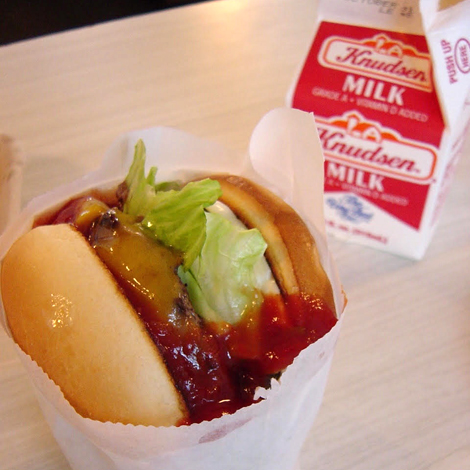
Address and phone: 10801 W Pico Blvd, Los Angeles, CA (310-475-3585)
Website: N/A
Why it’s influential: Walking into the 70-year old Apple Pan on the West side of Los Angeles for the first time usually results in a double take. You’ve seen it before: the countermen in white paper caps, the red leather stools, and the burgers served in tightly-wrapped waxed paper. The place looks like every other remake of a ‘classic’ burger counter, except this is the real-deal. This is the living-and-breathing primary source, Ur-burger joint that restaurants like Johnny Rockets are modeled after. Reportedly, someone from the Johnny Rockets organization was found rummaging through the Apple Pan garbage one day in search of the exact brand of canned tuna they used. Soon thereafter the garbage area was padlocked. Visit the Apple Pan for a dose of reality and a Hickory Burger—oh, and the tuna is not bad either.
THE MEERS STORE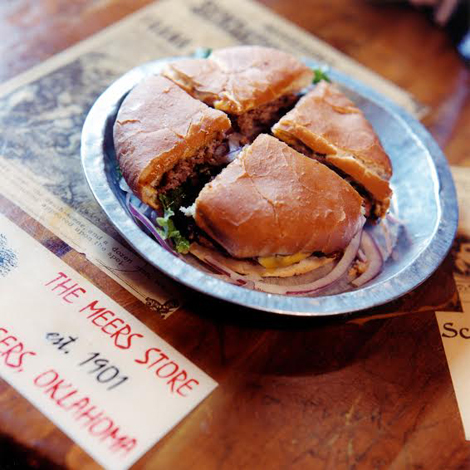
Address and phone: 26005 State Highway 115, Lawton, OK (580-429-8321)
Website: meersstore.com
Why it’s influential: In the 1980s, Joe Maranto bought a successful restaurant deep in the countryside of Southwestern Oklahoma. The place is so remote that Bonnie and Clyde hid out in the area on their famous killing and robbing spree. Joe saw potential in a middle-of-nowhere business that he once told me was, “the only thing in nowhere.” In an effort to attract customers Joe had a unique plan—raise longhorn cattle on his nearby ranch and serve burgers in his new restaurant strictly from the beef of his own herd. Joe closed the circle and created a burger as a stunt that coincided with the birth of a food trend: the locavore movement. Today, many newer burger joints boast that their beef comes from local purveyors, and in the case of Farm Burger in Atlanta, from their own herd—just like Joe.
DB BISTRO MODERNE
Address and phone: 55 W 44th St #1, New York, NY (212-391-2400)
Website: dbbistro.com/nyc
Why it’s influential: When celebrated French chef Daniel Boulud put his extravagant DB Burger on the menu in 2001 at DB Bistro Moderne, my guess is that he was semi-unaware of the controversy he would stir up, or of the readjustment to the burger business he would unleash. This absurd, yet tasty burger—stuffed with braised short rib and decadent foie gras—was served on a bun flecked with black truffle parmesan and held an outrageous $27 price tag at that time (today the burger is $35). Following his bold lead, every semi-fancy pants joint across America was taking stabs at a ‘gourmet’ burger, and a renaissance was born.
SHAKE SHACK
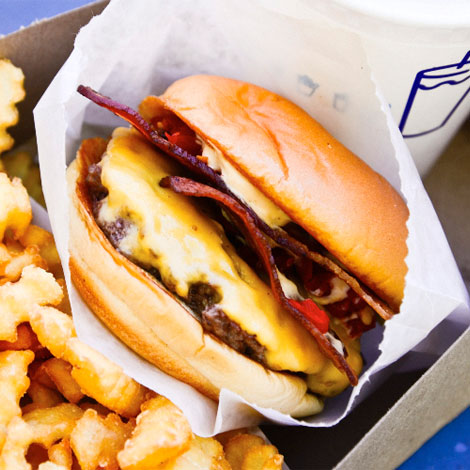
Address and phone: International
Website: shakeshack.com
Why it’s influential: Danny Meyer took a gamble and opened a small, modern lunch shack right in a New York City park. Within a few months, the lines were legendary, and an early t-shirt design depicted hundreds of customers waiting for burgers. Soon after the line was filled with tourists who considered Shake Shack an attraction as viable as a visit to Lady Liberty. What Danny had uncorked was the city’s desire to eat a classic smashed, burger patty, made from high-quality beef, with American cheese, served on a soft potato roll. It was in response to many of the fancy-pants burgers that were popping up all over following the success of the DB Bistro Burger. Today Shake Shack has locations all over the globe, and the company has gone public—clearly a gamble that paid off. But when the Great American Burger is involved, what did we expect?
